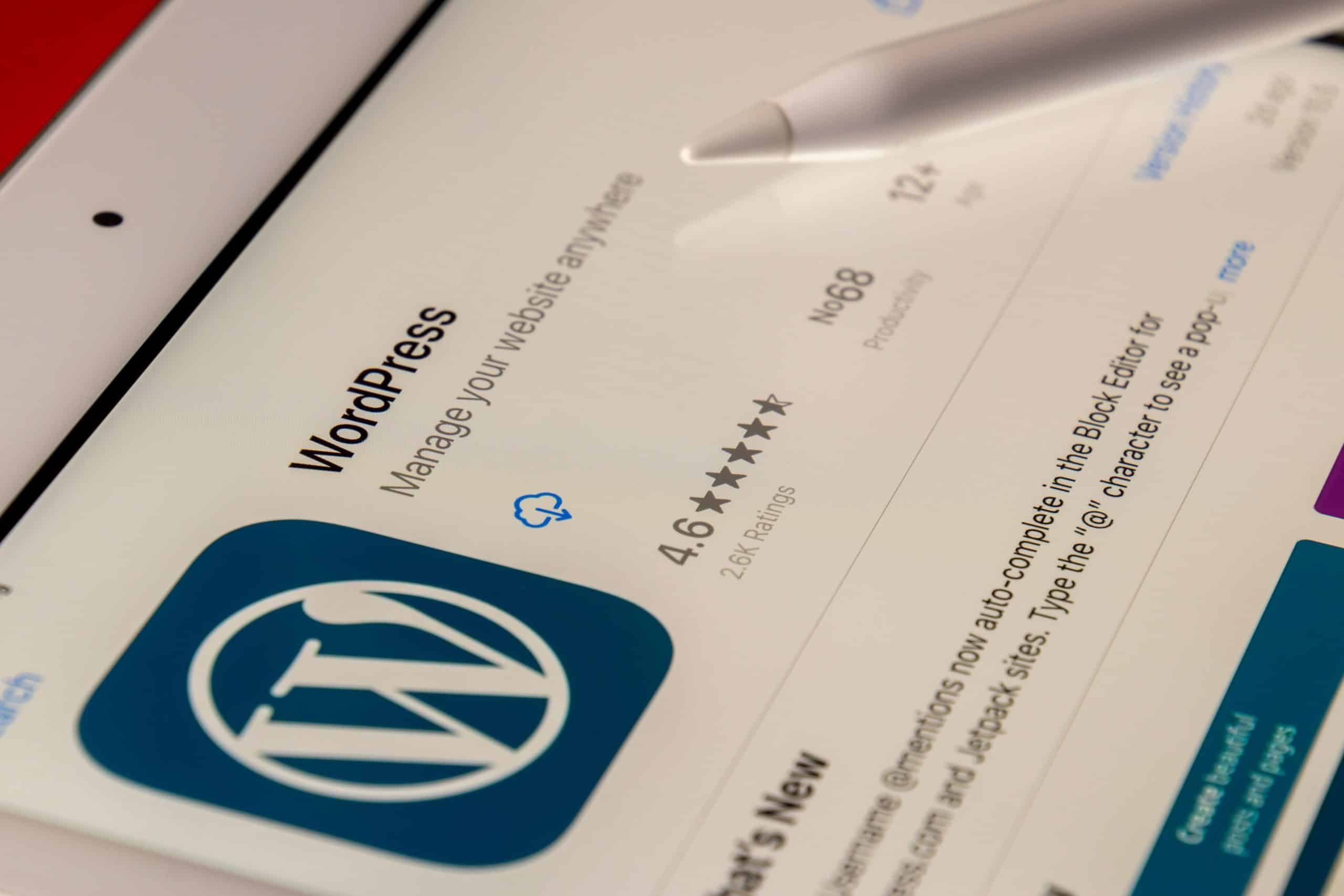In the ever-evolving landscape of web design, merging creativity with functionality is paramount, especially when it comes to designing websites on WordPress. As designers and developers seek tools that enhance their workflow, Figma has emerged as a powerhouse for collaborative interface design—offering endless possibilities for those looking to bring their visions to life. But what if we told you that the right plugins could transform your Figma experience into a seamless bridge between stunning designs and robust WordPress functionality?
Imagine effortlessly translating your intricate design mockups into fully functional WordPress sites without losing any of the flair or detail you envisioned. In this article, we dive deep into five of the best Figma plugins specifically tailored for WordPress—each one tried, tested, and proven to simplify your design process while amplifying your creative potential. Whether you’re a seasoned designer or just starting on your journey, these plugins will not only streamline collaboration but also empower you to turn ideas into reality faster than ever before. Ready to elevate your web design game? Let’s unlock the magic behind these must-have tools!
Importance of Using Plugins for WordPress
Harnessing the power of plugins can transform your WordPress site from a simple blog into a dynamic online platform, capable of meeting the myriad needs of its users. These plugins serve as powerful tools that extend your website’s functionality, allowing for custom features that can enhance user experience, boost SEO, and streamline management tasks. For instance, using design-centric plugins like those integrated with Figma can bridge the gap between visual creativity and practical implementation, enabling designers to quickly bring their visions to life right within the WordPress environment.
Moreover, adopting the right plugins fosters collaboration among team members and stakeholders. When designers utilize Figma plugins tailored for WordPress integration, they gain access to seamless workflows that simplify handoff processes between design and development stages. This synergy not only cultivates efficiency but also ensures that the final output aligns closely with original design intentions—promoting consistency in branding while saving time on revisions. Thus, leveraging these specialized tools isn’t just about adding features; it’s about elevating the quality of your digital presence by fostering intentional design choices across all facets of your site.
WP Figma
WP Figma stands out as a game-changer for designers looking to bridge their Figma projects directly into WordPress. One of its key features is the seamless integration that allows users to import designs in real-time, ensuring that visual concepts aren’t lost in translation. This plugin provides an interactive interface where designers can create custom layouts in Figma and then export those exact specifications to WordPress without any hassle.
Another remarkable feature is its dynamic content support, which enables users to incorporate flexible data structures from WordPress, such as posts and custom fields, directly within their Figma designs. This means that when you make updates in your WordPress backend, they instantly reflect within your visually crafted front-end designs—ensuring consistency across platforms! Additionally, WP Figma boasts powerful collaboration capabilities allowing teams to work on design iterations collectively while receiving immediate feedback—all contained within the familiar confines of both tools.
This plugin also excels with its responsive design controls; it allows users to visualize how their designs will adapt across different device sizes right inside the editing environment. By encouraging designers and developers to maintain a closer workflow connection, WP Figma ultimately enhances not just productivity but also fosters creativity through collaborative exploration of ideas between stakeholders. Embracing this tool could redefine how you approach web design projects moving forward!
Figmify
Figmify is more than just a plugin; it’s your compass to navigate the often murky waters of user experience (UX) design. With its powerful analytics and heatmapping capabilities, Figmify transforms Figma designs into actionable insights, allowing creators to visualize how users interact with each element in real time. Imagine designing a landing page and being able to see which buttons attract attention or where users drop off—this plugin turns that vision into reality.
The true magic of Figmify lies in its ability to bridge the gap between design and data. It doesn’t stop at providing statistics; the intuitive interface allows designers to iterate rapidly based on user feedback. By integrating A/B testing features directly within your Figma project, you can experiment with different layouts and immediately gauge their effectiveness without leaving the platform. This level of insight fosters a data-driven mindset that empowers designers to create not just aesthetically pleasing interfaces but also ones that genuinely resonate with users’ needs and behaviors, thus enhancing conversion rates on WordPress sites significantly.
Figma to WordPress
Figma to WordPress streamlines the design-to-development process, allowing creators to export their Figma designs directly into WordPress themes with just a few clicks. This seamless transition not only saves valuable time but also mitigates the risk of losing visual fidelity during transfer. By utilizing this plugin, designers can ensure that every pixel aligns with their original vision, maintaining brand aesthetics while empowering developers to focus on functionality rather than layout adjustments.
One of the standout features of the Figma to WordPress plugin is its layer mapping capability. This tool allows users to convert individual layers and components from Figma into specific WordPress elements, such as headers or buttons. With this granularity, it’s easier for teams to collaborate; designers can prepare intricate UI elements while developers simultaneously work on backend integrations without overlapping tasks or miscommunications. Ultimately, adopting this plugin fosters an efficient workflow that enhances creativity and vastly improves project turnaround times in building stunning WordPress sites from visually appealing Figma prototypes.
Figmotion
Figmotion elevates the standard of web animations by seamlessly integrating motion design capabilities right within Figma, redefining how WordPress users approach animation. This plugin empowers designers to create intricate, visually stunning animations without requiring extensive coding knowledge. With a user-friendly interface, Figmotion allows for real-time previews, making it easier to iterate on designs and see the animated elements in action before exporting them for use in WordPress.
One of Figmotion’s standout features is its timeline-based animation editor, which transforms complex animation processes into an intuitive experience. Designers can craft sophisticated sequences—such as fade-ins, rotations, and layered motions—simply by dragging keyframes along a timeline. The best part? Once your animations are perfected in Figmotion, you can export them directly as CSS or JSON files compatible with popular libraries like Lottie or GSAP. This seamless workflow not only saves time but also ensures that your website retains a professional look and feels with dynamic interactions that capture user attention and enhance engagement.

Content Reel
Content Reel is a game-changer for designers seeking to enhance their asset management workflow within Figma. This plugin allows users to create a centralized library of text snippets, images, and components that can be easily accessed and reused across projects. By streamlining the way you organize and retrieve your assets, Content Reel minimizes time spent searching for elements, allowing more focus on creativity and design innovation.
One standout feature of Content Reel is its ability to integrate dynamic content seamlessly into your designs. Whether you’re mocking up a blog post or preparing a product page for WordPress, you can pull realistic text or imagery directly from the plugin’s repository, ensuring that your layouts remain authentic and engaging without the tedious effort of manually sourcing each item. This not only boosts productivity but also enhances collaboration among teams by providing consistent access to essential materials when working together.
Moreover, with its user-friendly interface and customizable categories, managing your assets has never been easier. Designers can curate specific collections tailored to various projects—be it seasonal campaigns or client-specific needs—that can be updated effortlessly as new content becomes available. This flexibility empowers creatives to stay organized while maintaining an inspired approach that ultimately leads to better design outcomes on WordPress sites.
Color Palette Changer
The Color Palette Changer plugin is a game-changer for designers looking to elevate their Figma projects effortlessly. With just a few clicks, you can transform your entire design’s color scheme, allowing for quick experimentation with different moods and themes without the laborious task of manually adjusting each element. Imagine crafting multiple versions of your design in minutes—it’s an invaluable tool for iterating on concepts or experimenting with seasonal aesthetics.
What sets this plugin apart is its intuitive interface that allows users to save and switch between custom palettes seamlessly. This feature promotes not just creativity but also consistency across projects, making it easier to maintain brand identity across various touchpoints in WordPress. Whether you’re designing a landing page with vibrant hues or honing in on subtle tones for an elegant blog, the Color Palette Changer empowers you to explore infinite possibilities while streamlining your workflow—a true staple in any designer’s toolkit.

Conclusion: Choosing the Right Figma Plugin
In the ever-evolving landscape of design and development, selecting the right Figma plugin can significantly impact your workflow and project outcomes. It’s essential to consider not only the functionality of a plugin but also how it integrates with your existing processes. A plugin that enhances collaboration within your team or streamlines handoff to developers can elevate both efficiency and creativity, allowing you to focus on crafting exceptional user experiences.
Moreover, take time to evaluate user feedback and community recommendations before making a decision. The value of a plugin often lies in its ability to adapt over time; thus, opt for well-supported tools that receive regular updates and improvements based on user needs. Ultimately, the best Figma plugins are those that empower you to bridge gaps between design and development while aligning seamlessly with your unique vision for each WordPress project. So whether you’re enhancing typography settings or automating asset exports, choose wisely—each decision sets the stage for innovation in your designs.
Where Should We Send
Your WordPress Deals & Discounts?
Subscribe to Our Newsletter and Get Your First Deal Delivered Instant to Your Email Inbox.

